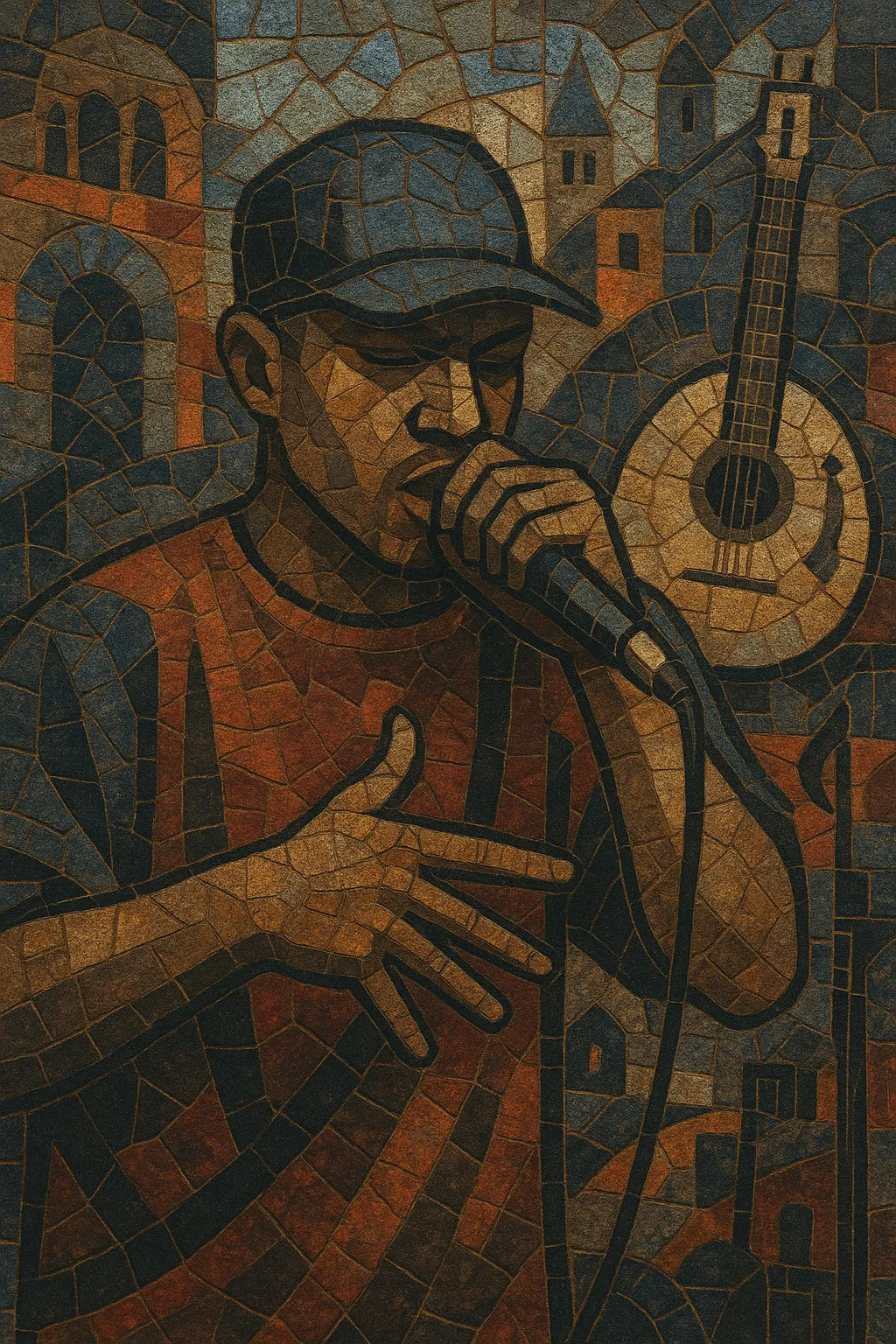Portuguese hip hop (often called “hip hop tuga”) is the Portuguese-language branch of hip hop culture that took root in Lisbon and Porto’s suburbs during the early-to-mid 1990s. It blends boom-bap aesthetics and East Coast rap lyricism with local slang, Lusophone African inflections (from Cape Verdean, Angolan, and Guinean diasporas), and occasional nods to Portuguese musical heritage such as fado and guitarra portuguesa.
Across its evolution, the scene has moved from sample-heavy, DJ-and-MC cypher culture to a wider palette that includes R&B hooks, dancehall/reggae flavors, and modern trap sound design. While socially engaged storytelling and sharp wordplay remain central, the genre now spans everything from classic conscious rap and backpack sensibilities to radio-friendly hits and darker, street-oriented flows.
Portuguese hip hop emerged in the early 1990s through immigrant and working-class neighborhoods around Lisbon and Porto. Crews and DJs drew on American East Coast rap’s boom-bap foundations while rapping in European Portuguese, often interlaced with Kriolu and neighborhood slang. Pioneers helped legitimize the style on national radio and TV, taking the form from block parties and youth centers to the national stage.
By the late 1990s and 2000s, the scene consolidated around influential MCs and crews whose albums codified a distinctly Portuguese sound: sample-driven beats, DJ cuts, and highly literate lyrics addressing identity, social inequality, and everyday life. This era established a durable live circuit and inspired a generation of producers refining their craft on MPCs and early DAWs.
The streaming era amplified regional accents and stylistic variety. Artists incorporated 808-heavy trap, melodic R&B hooks, and Afro-diasporic rhythms, while still preserving the centrality of punchlines and storytelling. Independent labels, home studios, and online platforms lowered barriers to entry, expanding the scene beyond Lisbon and Porto.
Today, Portuguese hip hop ranges from classic boom-bap traditionalists to crossover hitmakers. Collaborations with Lusophone and European peers are common, and producers freely combine local samples (including fado motifs) with modern sound design. Despite stylistic breadth, the genre remains anchored in craft: wordplay, flow, and beat-making.


